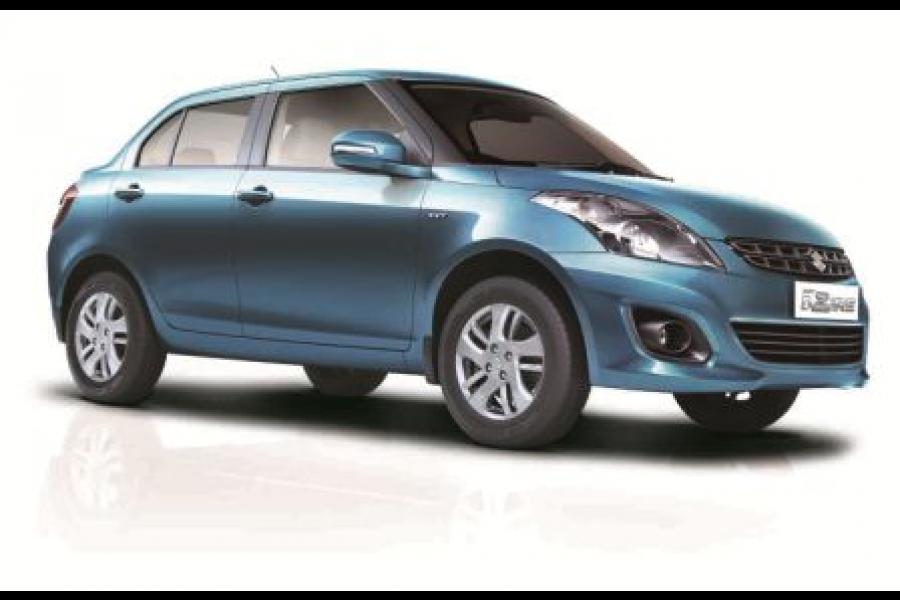Maruti Swift Dzire; Why so cheap?
The new, feature rich Dzire is actually cheaper than the old, not so feature rich version by about Rs. 25-30, 000. That’s really aggressive pricing.
Earlier this week Maruti launched the new Swift Dzire. Shorter and quite a bit cheaper than the older version. So much so that the price difference between the Swift hatchback and the Swift Dzire is now just about Rs. 50,000. Considering that the Dzire is now an all new package with better interiors, auto climate control, integrated music system, steering mounted controls…the works; this comes across as a sweet deal. In fact Maruti says that the new Dzire has about 130 odd things which have been improved. You can buy the Dzire starting at Rs 4.79 lakh for the base petrol version to Rs 7.09 lakh for the diesel top end. All prices are ex showroom Delhi. This begs a question. Why so cheap?
On the face of it there is a very clear answer; the car has been shortened to less than 4 meters so this is nothing but the excise duty benefit (10 percent now as compared to 22 percent earlier) that is being passed on to the customers. But the new, feature rich Dzire is actually cheaper than the old 4.1 meter, not so feature rich Dzire by about Rs. 25-30, 000. That’s really aggressive pricing. So I decided to ask a few people around and this is what I learnt. Maruti, its vendors and its dealers believe that this launch signals the comeback of the giant who had gone through a very troubled 2011.
Recurrent strikes at Maruti’s plant meant that the company couldn’t produce enough cars. The waiting list on the Swift hatch just kept piling up. To make matters worse, the retail price differential for petrol and diesel resulted in a huge preference for diesel cars with customers. Maruti’s all time best selling diesel car was the Swift. It also didn’t help that Maruti did not have enough diesel engines in their bag. It realized that a capacity of 2.4 lakh engines (made by Suzuki in India, licensed from Fiat SPA Italy) was not good enough. Finally, the A-segment cars (800, A Star, Wagon R; mostly petrol) weren’t doing well. Year on year sales of Maruti’s cars in the bread and butter A-segment are still down by about 15 percent.
So while Maruti was grappling with one issue after another, competitors like Volkswagen,Toyota and Ford had an open field. These companies were dancing all the way to the bank, with models like the Polo, Etios & Liva and of course the Figo. All of them good products, available in both petrol and diesel variants and priced competitively. It didn’t come as a surprise that Maruti’s loss was their gain. By this I mean both acceptability to the brand and market share.
Now Maruti is out to take the fight back to them. It would have you believe that the labour issues are all sorted out. Through efficiency improvements, its in house diesel engine capability has moved up by another 60, 000 units taking it to a total of 3 lakh. It has also signed an agreement with Fiat which will supply Maruti one lakh engines. These will be shipped as complete units to Maruti from Fiat’s India plant in Ranjangaon, Pune. That should be another capacity addition of about 8, 000 odd engines per month. All of this means that Maruti is now all set to play the product + diesel game in the market (Swift, Dzire, SX4; No the Ritz just does not count). The Dzire’s aggressive pricing is targeted towards getting the lost market share back.
Dealers say that one should expect Maruti to ship somewhere around 30, 000 diesel vehicles month after month starting March 2012. And then add the Maruti Ertiga to that number starting April 2012. If the Ertiga takes off, Maruti says the board has agreed in principle to set up another diesel engine manufacturing plant with a capacity of one lakh units. Expect a cracker of a fight between Maruti and the multinational brigade in the next few months.
UPDATE: Okay, I just had a quick chat with Shashank Srivastava, GM at Maruti Suzuki and he shared some interesting thoughts. In principle, the cost of manufacturing a car that shares a platform with a hatchback is not huge. The vehicles might look different -- a hatch, a MUV or a car -- but the more vehicles you make from the same platform the lower the per-unit cost. The Swift, Ritz and Dzire are all based on the same platform with high level of back end standardisation in parts and materials. Also, it is just a psychological thing that a sedan should cost more than a hatchback and the value of the boot is simply perceived to be high.
Srivastava says in most markets of the world, like Japan, Indonesia and Thailand among others the price of the Honda Jazz (hatchback) is more than the City (sedan). This is because the rear glass area of the hatch is much more difficult to make. Interesting! Next, Maruti’s engineers have worked hard to ensure that the new Dzire is feature rich and if one was to put a value to the added features it would be around Rs. 28, 000-29, 000. That’s about it. So, thanks to the lower excise duty on the car (because it is less than 4 metres), the benefit has been passed on to the customer. Also, localisation of the Dzire is around 97 percent so the company’s margins are actually immune to any Yen (currency) fluctuation.
The thoughts and opinions shared here are of the author.
Check out our end of season subscription discounts with a Moneycontrol pro subscription absolutely free. Use code EOSO2021. Click here for details.

